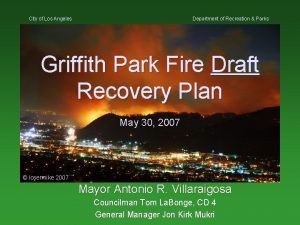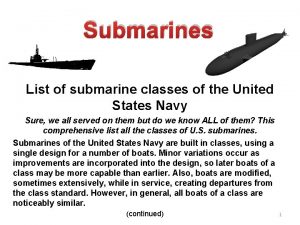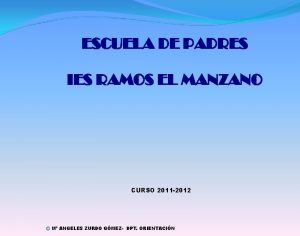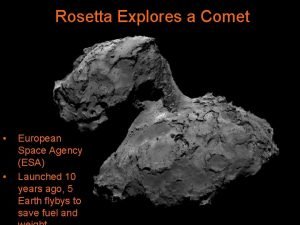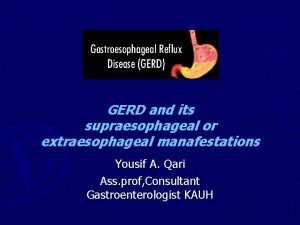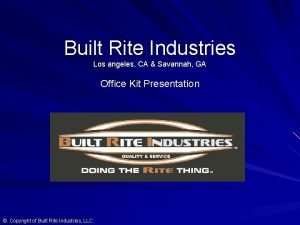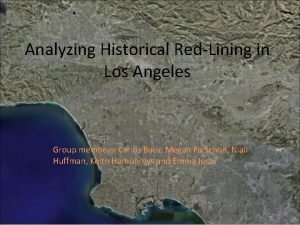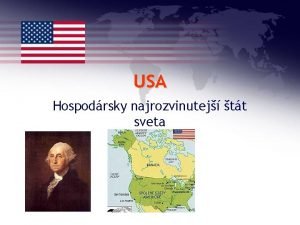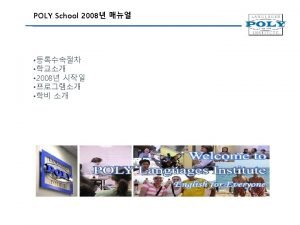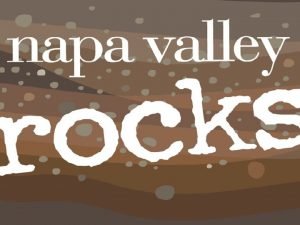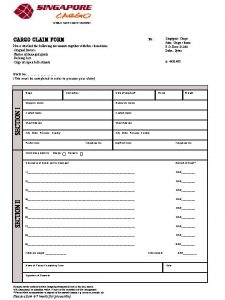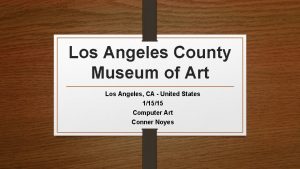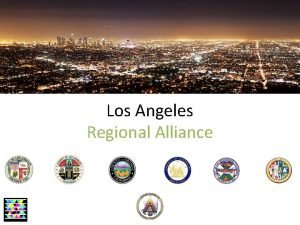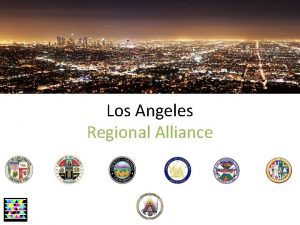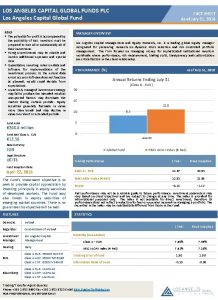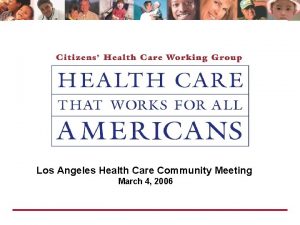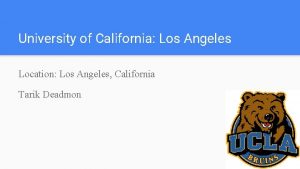Los Angeles County Cargo Forecasting and Simulation Model






















- Slides: 22

Los Angeles County Cargo Forecasting and Simulation Model presented to TRB Planning Applications Conference presented by Vamsee Modugula and Maren Outwater Cambridge Systematics, Inc. May 2007 Transportation leadership you can trust.

Overview Background and Objectives Modeling Process 2003 Model Calibration and Validation Summary 1

Background Significant growth in goods movement in the Los Angeles region required improved models to evaluate impacts Models needed to address different potential improvements • Higher capacity intermodal rail terminals • Truck-only lanes • Truckways • Extended working hours at the ports • Short-haul shuttles from ports to inland freight facilities 2

Objectives Components of the freight model should include • Long-haul freight from commodity flows • Short-haul freight from socioeconomic data in the region and warehouse and distribution centers • Service truck movements Recognize trends in labor productivity, imports, and exports Integrate with passenger models 3

Study Area Within 5 county SCAG region – zip codes Remainder of California – counties Remainder of USA – states 4 external zones; 2 each for Canada and Mexico 4

Modeling Process Coarse Zone Level {State/County/Zip} Generation Productions and Attractions by Commodity Class Distribution Long-Haul Flows by Commodity Class Direct Short-Haul Flows by Commodity Class by Truck Mode Choice Long Haul Flows by Mode and Commodity Class TLN Direct Long-Haul Flows by Mode and Commodity Class Long-Haul Flows to TLN by Mode and Commodity Class Short-Haul Flows to TLN by Truck and Commodity Class Fine Distribution Fine Zone Level Direct Short-Haul Flows by Commodity Class by Truck 5 Direct Long-Haul Flows by Mode and Commodity Class Vehicle {Annual PA>Period OD} Long-Haul Flows to TLN by Mode and Commodity Class Short-Haul Flows to TLN by Truck and Commodity Class Assignment {6 Class}

Model Descriptions Trip Generation • Implemented at the Coarse Zone Level • Based on tonnage rate per employee • I-E and E-I trips allocated based on factors derived from ITMS • Port trips added from the Port’s models Trip Distribution • Trips split into short-haul and Long Haul • Short trip distribution based on a gravity model • Long trips are distributed using a joint distribution and mode choice model 6

Model Descriptions Mode Choice • Estimates Truck and Rail Trips • Based on a multinomial logit model • Applied for 3 distance classes Service Model • Estimates safety, utility, public / personal vehicles Fine Distribution Model • Disaggregates trips from coarse zone level to the fine -zone system 7

Transport Logistics Node Model Estimates direct and TLN movements 8

Vehicle Model Converts tons to trucks Parameters to influence empty trucks Standard Vehicle Model to generate direct O-D flows Touring vehicle model that simulates multi-point pick-up and drop off 9

Touring Vehicle Model Performed on TLN’s and user-specified zones 10

Model Validation Model outputs compared to ITMS data by commodity group and distance class Agriculture Mining and Fuels Cement and Concrete Manufacturing Motor Freight Transportation Chemical Manufacturing Nonmetallic Minerals Equipment Manufacturing Other Transportation Food Manufacturing Paper and Wood Products Manufacturing Petroleum Metals Manufacturing Wholesale Trade <=500 miles 500 -1500 miles Truck volumes compared to truck counts 11 >1500 miles

Outbound Tonnage Produced by Commodity Group Wholesale Trade 3% Petroleum 8% Paper and Wood Products Manufacturing 4% Cement and Concrete Manufacturing 11% Chemical Manufacturing 5% Other Transportation 9% Equipment Manufacturing 3% Nonmetallic Minerals 17% Food Manufacturing 11% Motor Freight Transportation 11% Mining and Fuels 0% 12 Agriculture 8% Manufacturing 5% Metals Manufacturing 5%

Production Validation Difference in Observed and Model Commodity Share Outbound Tonnage Share (in Percent) 20 18 ITMS Share of Commodity Model Share of Commodity 16 14 12 10 8 6 4 2 0 Agriculture Chemical Manufacturing Cement and Concrete Manufacturing Food Manufacturing Equipment Manufacturing Other Petroleum Metals Motor Freight Transportation Manufacturing Transportation Paper and Manufacturing Mining Nonmetallic Wholesale Wood Products and Fuels Minerals Trade Manufacturing Commodity Group 13

Inbound Tonnage Consumed by Commodity Group Wholesale Trade 2% Petroleum 6% Paper and Wood Products Manufacturing 6% Other Transportation 7% Agriculture 13% Cement and Concrete Manufacturing 13% Chemical Manufacturing 6% Nonmetallic Minerals 11% Motor Freight Transportation 9% Mining and Fuels 2% Metals Manufacturing 4% 14 Equipment Manufacturing 3% Food Manufacturing 13% Manufacturing 5%

Consumption Validation Difference in Observed and Model Commodity Share Inbound Tonnage Share (in Percent) 20 ITMS Share of Commodity 18 Model Share of Commodity 16 14 12 10 8 6 4 2 0 Agriculture Chemical Manufacturing Cement and Concrete Manufacturing Food Manufacturing Equipment Manufacturing Metals Manufacturing Motor Freight Transportation Mining and Fuels Commodity Group 15 Other Transportation Nonmetallic Minerals Petroleum Paper and Wood Products Manufacturing Wholesale Trade

Import and Export Tonnage Validation Tonnage (in Millions) 30 25 ITMS Data Model Data 20 15 10 5 0 Agriculture Equipment Manufacturing Chemical Manufacturing Food Manufacturing Mining and Fuels Metals Manufacturing Motor Freight Transportation Commodity Group 16 Nonmetallic Minerals/ Cement Concrete Paper and Wood Products Manufacturing Other Transportation Wholesale Trade Petroleum

Trip Distribution Validation for Short-Haul Trips Average Trip Length (in Miles) 80 ITMS Short-Haul Model Short-Haul 70 60 50 40 30 20 10 0 Agriculture Chemical Manufacturing Cement and Concrete Manufacturing Food Manufacturing Equipment Manufacturing Metals Manufacturing Motor Freight Transportation Mining and Fuels Commodity Group 17 Other Transportation Nonmetallic Minerals Petroleum Paper and Wood Products Manufacturing Wholesale Trade

Mode Choice Validation Mode shares by commodity group ITMS Data 18 Model Difference Final Commodity Group TRUCK RAIL Agriculture 82% 18% 96% 4% 14% -14% Cement and Concrete M 87% 13% 44% 56% -43% Chemical Manufacturing 46% 54% 39% 61% -7% 7% Equipment Manufacturing 68% 32% 77% 23% 8% -8% Food Manufacturing 71% 29% 65% 35% -6% 6% Manufacturing 85% 15% 82% 18% -3% 3% Metals Manufacturing 62% 38% 56% 44% -6% 6% Mining and Fuels 0% 100% 0% 0% Motor freight Trans 100% 0% Nonmetallic minerals 93% 7% 84% 16% -10% Other transportation 0% 100% 0% 0% Paper and Wood Products 68% 32% 84% 16% 17% -17% Petroleum 56% 44% 64% 36% 8% -8% Wholesale Trade 2% 98% 8% 92% 6% -6%

Overall Assignment Validation Functional Class Number of Counts Count Volumes Truck Model Volumes Difference % Difference Validation by Functional Class - Trucks Freeways 67 603, 800 550, 013 (53, 787) -9% Arterials 124 59, 580 48, 232 (11, 348) -19% Total 191 703, 380 620, 442 (82, 938) -12% Validation by Functional Class - Autos Freeways 158 9, 346, 147 10, 854, 856 1, 508, 709 16% Arterials 557 6, 814, 000 6, 164, 222 (649, 778) -10% Total 715 16, 160, 147 17, 019, 077 858, 930 5% Validation by Functional Class - Total Daily 19 Freeways 158 9, 947 11, 404, 869 1, 454, 922 15% Arterials 557 6, 913, 580 6, 212, 454 (701, 126) -10% Total 715 16, 863, 527 17, 639, 520 775, 993 5%

Cordon Validation Trucks at external stations 20 Total Annual Tons 35, 461, 096 53, 633, 179 54, 059, 268 Total Annual Trucks 6, 514, 167 8, 851, 110 7, 767, 139 Average Daily Trucks 26, 057 35, 404 31, 069 Observed Daily Trucks 26, 948 29, 698 28, 848 Truck Count Locations I-8, I-15, I-5 US-101, I-5, CA- I-8, I-15, I-40, I 14, US-395 10

Summary Different levels of detail (zip codes and TAZs) useful for freight forecasting TLN and service models provide more accurate accounting of truck trips Detailed calibration provides more accurate results Use of changes in labor productivity and trends in the future model Cargo model can evaluate a wider range of alternatives 21
 Aunque hablara la lengua de los angeles
Aunque hablara la lengua de los angeles Child welfare services
Child welfare services City of los angeles department of recreation and parks
City of los angeles department of recreation and parks Los angeles class submarine list
Los angeles class submarine list Prochinetice
Prochinetice Lahc counseling
Lahc counseling Rdox los angeles
Rdox los angeles Roselyn valerín clínica los angeles
Roselyn valerín clínica los angeles Tracking upa
Tracking upa Comet los angeles
Comet los angeles Los angeles schools
Los angeles schools Los angeles position
Los angeles position Los angeles schools
Los angeles schools Los angeles oesophagitis classification
Los angeles oesophagitis classification Angie rupert
Angie rupert Los angeles oesophagitis classification
Los angeles oesophagitis classification Cottage law los angeles
Cottage law los angeles Built rite windows
Built rite windows Redlining los angeles
Redlining los angeles Whole person care los angeles
Whole person care los angeles New york rozloha
New york rozloha Poly language school
Poly language school Distancia de san francisco a napa valley
Distancia de san francisco a napa valley


